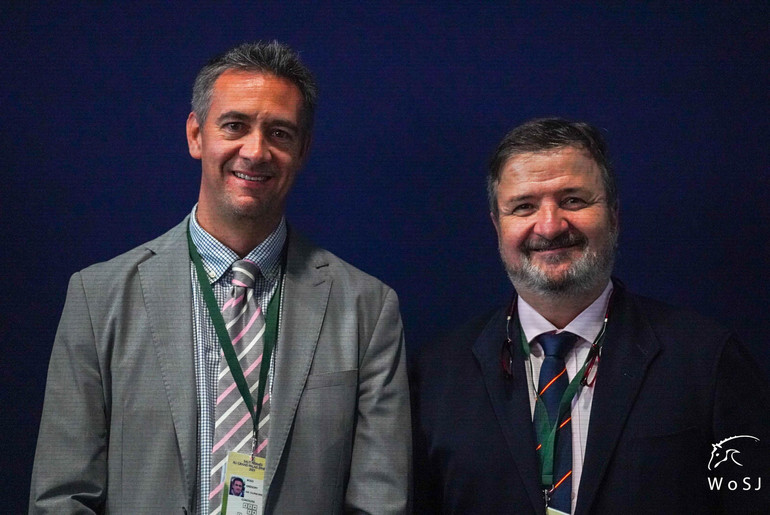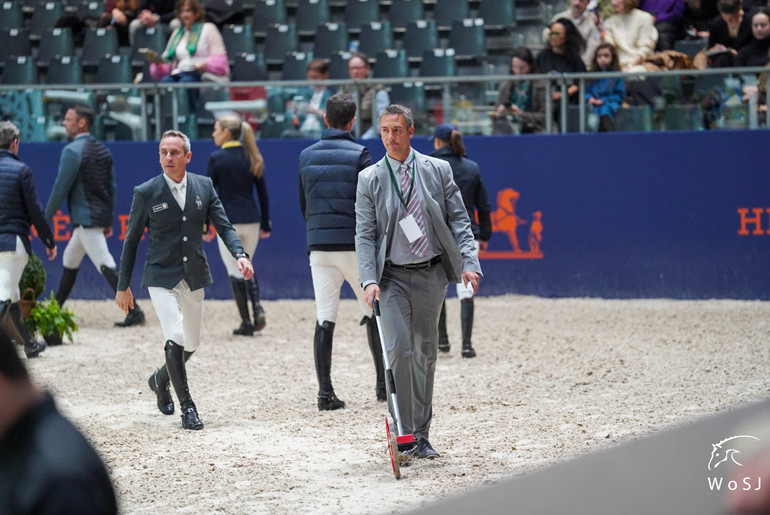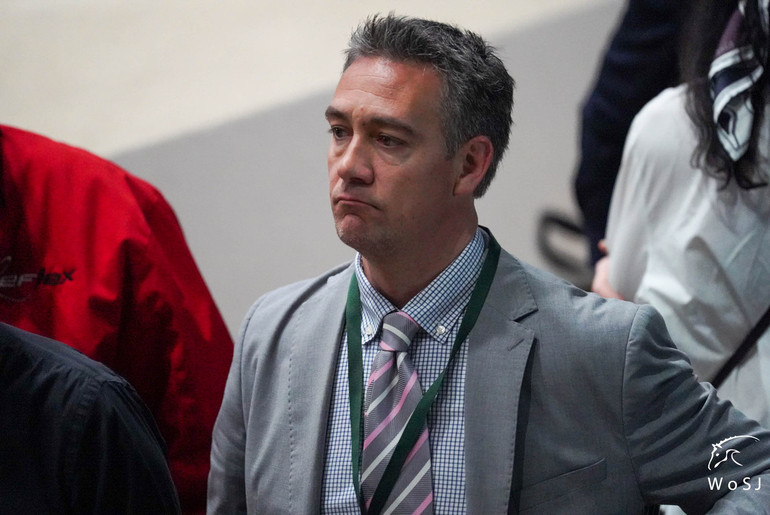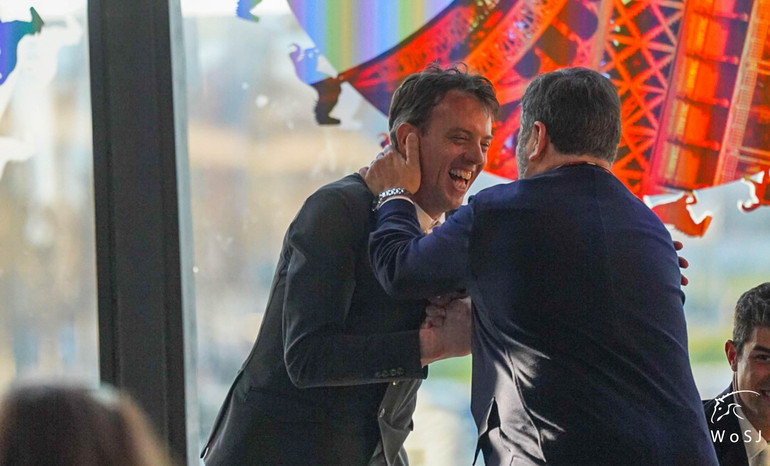Text © World of Showjumping
In December 2022, Spain’s Santiago Varela (54) and France’s Gregory Bodo (44) were appointed as co-course designers for the Paris 2024 Olympic Games.
“As is always the case for the Olympic Games, we went through a thorough evaluation process and selected two individuals both of whom hold a wealth of experience and are renowned for their dedication and impeccable work ethic,” FEI President Ingmar De Vos said at the time when announcing the appointment of Varela and Bodo. “The designs created by Santiago Varela and Gregory Bodo are stunning and combine huge expertise with unique local flavour. Most importantly, they always put the horse at the core of their thought process and produce courses mindful of the welfare of both our equine and human athletes. I am convinced that with their knowledge, creative spirit, and professional attitude, the equestrian community, the spectators and the fans around the world can expect jumping courses of the highest quality.”
A surprise selection
Varela, who after the Tokyo Olympics told World of Showjumping how he planned to slow down and do less course designing due to his other work commitments, was surprised to be appointed for his second Olympic Games. “Honestly, I never thought I would be a course designer at the Olympic Games – not to mention doing it twice in a row,” he says. “We were nominated by the FEI Jumping Committee, really at the last minute, and then appointed. I don’t know exactly how the process went, but I received a call – and it was not simple to understand the proposal at first, but finally we reached a solution that everyone was happy with. However, when I received the proposal, I really needed to think – it was not an easy decision.”
Horse welfare is our first priority, but we also want to provide great emotions to the public
“First of all, I was happy and proud to be appointed, and to get to do this in co-operation with my friend Santiago makes it even better,” Bodo fills in. “I waited for a long time to get an answer to my application and I would like to thank my national federation, GL events, the International Jumping Riders Club and all the other members of the community for their support. Our goal is to create the best Olympic Games we have seen, and there is a big team working with us. However, we are late with the work, as we’re approximately six months behind schedule. We want to see good sport in Paris, with the horses jumping well, and in addition we will respect the values of Olympianism. Horse welfare is our first priority, but we also want to provide great emotions to the public – it is very important for the success of the Olympic Games, and it is a big goal for me personally. Paris shall be a reflection of the evolution and modernity of our sport. I have done different championships – the Europeans, the World Equestrian Games, the World Cup Finals, the Tokyo Olympics as an assistant for Santiago – and I build 30 events per year; I believe this experience is important now. However, the Olympics is the pinnacle in the career of a course designer; it is the most important event in any sport. To prepare for Paris 2024 I have decided to reduce my shows during 2023 and especially in 2024; I must remain in harmony with myself, particularly as I have to also fit in my occupation as marketing and management teacher.”
“It is totally different now with the two of us working together than working alone,” Varela points out. “However, I needed to think; it was really late to nominate us, and I had to re-organise my life totally. My life is not simple; I have a lot of other commitments and I had to reconsider if the next two years would be manageable. However, I am very proud to have been selected and we must thank the FEI and the OC for their trust in us.”
“At the moment, we are working on the designs and selecting themes for the fences,” Varela continues. “However, we are in a hurry, working with a big team of designers, trying to implement our ideas. It is simple to have an idea, but after you have one, you have to make it a reality and create the fences and see if it works or not. Just like for Tokyo, we have nine people – architects and designers – working on creating the fences. They now have more experience than before and they have worked together prior, which makes life slightly easier, but we are really late in the schedule.”
A friendship based on mutual respect
Varela and Bodo originally met during the World Equestrian Games in Normandy in 2014, then a year later in Calgary, and have worked together on numerous occasions – building a solid friendship throughout the years. When World of Showjumping in 2018 – after his debut on the five-star circuit – first spoke with Bodo about the philosophy behind his designs, he said how he would like to think of himself as a modern course designer, with horse welfare and respect for the horses at the centre of his work. “I like to build courses with the welfare of the horse in mind; there should not be too big efforts. I’m thinking about the natural side of horses in order to build and create my courses. I try to focus on creating subtle courses, with light faults, natural faults,” he said, adding that building at Olympic Games was his dream. And after assisting Varela at the Tokyo Olympics, Bodo’s dream is now coming true – on home soil, in the French capital and at one of the most iconic venues in the world: Versailles.
We have the same philosophy in the building of our courses; we only aim to pose questions to the riders, never to the horses
“I first had a chance to work with Santiago in Lyon in 2017 – my first World Cup event,” Bodo recalls. “For me, Santiago is now not only a respected colleague, but a friend. We have a very good relationship, and a confidence between us. I think we share the same spirit when it comes to the high-level sport, and we have the same philosophy in the building of our courses; we only aim to pose questions to the riders, never to the horses. For me, that is very important. Especially now in the preparation towards the 2024 Olympic Games in Paris, it is essential that we have a similar mindset. In addition, I believe that sharing our knowledge and skills brings substantial benefits for the sport; for some time now we are seeing how many big shows opt to have two high-level courses designers where one is the chief and the other his advisor.”
Varela – the technical delegate at the 2016 Olympic Games in Rio de Janeiro – had the monumental task of designing the jumping tracks at the Tokyo Olympics as well, where Bodo was his assistant. “The horses are the stars, and we have to protect them – this is our job. Wherever you are, you are always there with one target: The horses come first and the results are secondary,” he said after the event which was organised in unusual circumstances, starting with the uncertainty created by the Covid-19 pandemic, the new format introduced for the jumping competitions, as well as last minute challenges caused by the flood lights in the arena at the Baji Koen Equestrian Park.
In Paris, the team competitions will again be jumped prior to the individuals – a change that Varela welcomes. “We are not the right people to speak about the format, but I am clearly happy to have the teams before the individuals,” he says. “As course designers, we simply try to do our best with the conditions that we have, with the rules we have to respect, and the level of horses and riders that will be competing. The level of our sport today is very high, and being a course designer is a difficult job. People tend to believe that we control the number of clear rounds, but this is not true. We are only humans, and if we knew everything, and could control the numbers, we would be better off playing the lottery than designing courses.”
“Day by day, our sport is getting more complicated,” Varela continues. “We have to interchange ideas and, currently, we have a group between us course builders where we can share our thoughts. I believe that in this way we can grow together. It is easy to work with Gregory because we have the same mentality; we are there for the horses. Their welfare is our first priority, and when you keep this in your mind, it is simple to agree. Obviously, we can also disagree, but finally, we have the same priority; the horses. In the end, we do have a common idea, and we have huge respect towards each other. We both understand that in our sport, we keep learning every day, and we have to keep our minds open.”
Our questions are mainly about the communication between the horse and the rider
“Everyone has their own ideas, which have to be respected, and there are many approaches to our sport and many ways to reach the same target,” Varela continues. “However, to be able to work together, you must have a common idea and a similar system. We both like to play with the balance, we like to put the problems on the riders… Our questions are mainly about the communication between the horse and the rider. In our courses, the riders have to understand their horses and concentrate.”
“Nowadays, the modern course designing is extremely difficult. We must take a lot of parameters and criteria into account – many more than five or ten years ago; the regulatory changes, the speed of the horses, the dimensions of the fences, quality of footing, weight of the poles… But also the fact that the horses are becoming real athletes,” Bodo fills in. “When it comes to Paris, we cannot be surprised – we have to take the little time we have available to prepare well.”
Feeling the pressure
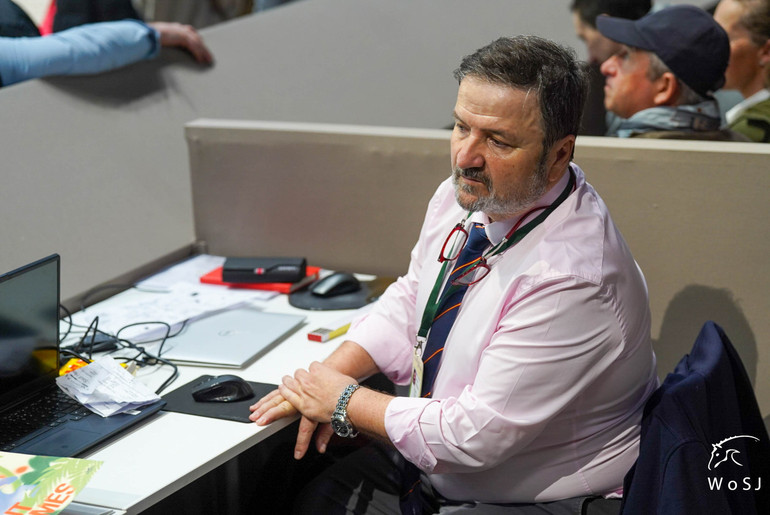
"The problem is that the level of the participants is so varied: We are not only going to have European riders at the Olympics, so we have to know the standard in other parts of the world as well, and test things everywhere to see what the riders can manage," Santiago Varela says. Photo © Nanna Nieminen for World of Showjumping.
A lot will be at stake in Paris, not only medals. The Olympic format has been the subject of a heated debate for years within the jumping community – causing huge disagreements between the FEI and the riders. Furthermore, there is pressure from groups of animal rights activists – such as PETA – that are calling on the IOC to ban equestrian sports from the Olympics. “Our first goal is to survive, and the second is to be successful,” Varela laughs before getting serious when asked if the two feel the weight of the whole community’s future on their shoulders. “There is no question, we need to get it right. Now that we are two course designers, we have more opportunities to test different lines and fences – even though we already before Tokyo were a big team of course designers. The problem is that the level of the participants is so varied: We are not only going to have European riders at the Olympics, so we have to know the standard in other parts of the world as well, and test things everywhere to see what the riders can manage.”
There is no question, we need to get it right
“In general, however, I think we have to be less dramatic about the number of clear rounds,” Varela points out. “When we have a five-star Grand Prix in Europe, around ten clear rounds is usually considered a good number, whereas in America, most likely two to five would be perfect – and who is right? It all depends on what the public is expecting. In Tokyo, nobody knew what to expect, so any result felt valid. In Paris, we will again be faced with a new situation, but I think in general, we have to be less dramatic and not get so stuck on numbers – the most important is to have good sport.”
“Theoretically, we have experience enough to be there, even though it is not a guarantee for being successful,” Varela says about the pressure. “There is more to our sport than mathematics, and at the end of the day we will always have situations that cannot be expected. Naturally, we are under pressure, but it is something we have to deal with. In this sport, it is impossible to find a situation where everyone agrees, but that is life. Obviously, we have been chosen because some people do have faith in us and there are those who like this solution, but I am sure there are also people who are not in favour of it. And we have to respect all opinions. Do I feel like we have the confidence of the community? I would like to believe so, otherwise we would not have been appointed.”
“To manage the pressure, we have to forget the opinions and simply do our best – and after, we have to accept the criticism,” Varela concludes. “For sure there will be people who disagree with what we will do, and vice versa. However, we will always have a winner – we cannot be too dramatic. After all, we must remember that our sport should be a source of joy and not drama. We have a great sport, and we have to show this to the world – and also how the horses are the most incredible animals in the world. We can only be thankful to have this opportunity, even though I know from my previous experience that the reality is that we will be totally destroyed afterwards. Whether it will be liked or not, I hope we can look back on Paris and be proud of our work.”
“We must be faithful to who we are, and not think about the pressure,” Bodo adds. “Let’s just go and do what we do best. You know, Pierre de Coubertin once said that the most important thing during the Olympic Games is not winning but rather participating – because crucial in life is not so much the triumph but that everyone fought hard.”
No reproduction of any of the content in this article will be accepted without a written permission, all rights reserved © World of Showjumping.com. If copyright violations occur, a penalty fee will apply.



